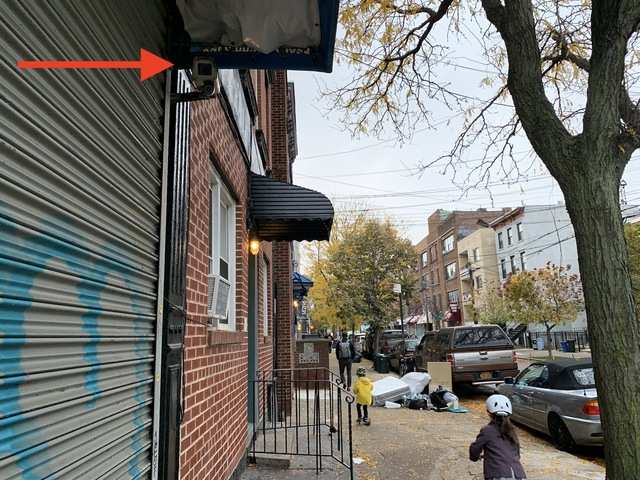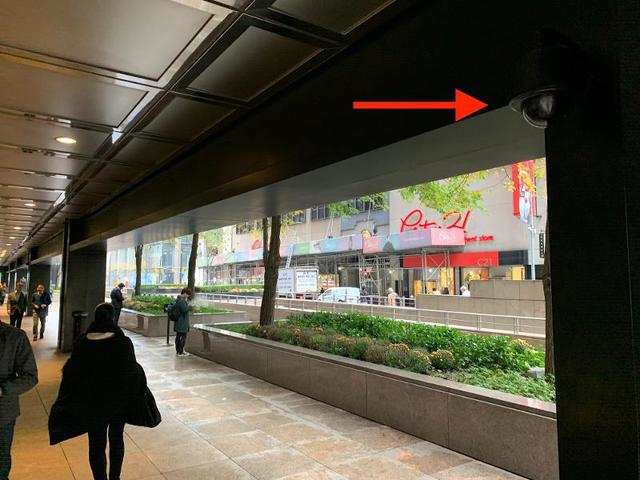
When my editor asked for this assignment, I agreed immediately. It was only as I went home that day noticing all of the cameras around me that I began to realize the truth behind the saying — ignorance is bliss.Cameras monitoring cities are not new. Businesses, police, and security firms have long used them for safety and protection. More recently, cameras have become a fixture on phones and cars. Although, some American cities, like San Francisco, Oakland, and Berkeley, have banned police from using facial recognition.But they’re not banned in New York. The NYPD has used facial recognition software since 2011. Dan Verton, editor of Homeland Security Today, told the BBC the city’s monitoring is so advanced that it will notice the littlest things, like an unattended bag.In August, the NYPD managed to identify Larry Griffin II, a suspect who had left two hoax bombs in a Manhattan train station in less than an hour. They identified him out of more than 8 million people, using several grainy photos.On the day in question, I woke up, looked at my phone, then checked the news on my laptop. Already, I had interacted with two cameras, albeit my own. Outside my apartment, about 15 feet from my door, I saw two more cameras.I turned my head around the corner, and found another one.Every step down the four flights of stairs took me past more. There was one camera on each level, adding up to four.As I drew eye level to the camera on the ground floor, I wondered, how often was “big brother” (or my building manager) watching? I passed two more cameras before I reached the exit. By my count that was nine before I’d gotten outside.My first breath of almost-fresh New York air was ruined by a mixture of trash and surveillance.It was a fittingly grey day to document our well-surveilled society. Another camera watched over storefronts. Over the next 150 feet, I two more cameras recorded my movements.Turning the corner, the streets were empty, but the recording continued. Over the last year, surveillance on New York’s roads has expanded. More than 2,000 speed cameras were being set up in 750 areas across the city, close to schools, to help with road safety.I counted four cameras on my side of the road. Some were positioned abruptly, staring down.I saw cameras ruining streetscapes. Take this plain wall interrupted by a camera. I walked past six more on this street …… including this amateur job.Across the road, I spotted cameras that appeared a little more on the DIY side.On my journey through the “surveillance state”, I came across several signs warning the public they were being watched.Even our children were being watched. It’s worth noting, however, that the footage on many of these cameras is not constantly monitored, and not all of the footage is stored somewhere for later analysis.As I turned onto Bedford Street, I was struck cold by the sight of this white camera, which, for some reason, reminded me of “The Terminator.” I saw another four before reaching the train station.On the platform at Bedford Station, I spotted three old cameras, including the one seen here. Because they’re old and chunky, they blended in, and I had to really look to find them.On the train, I couldn’t see cameras anywhere, so despite barely being able to breath, let alone move, I felt at peace. There are a few places in New York that are protected from surveillance by the penal code, including bathrooms and dressing rooms.I was greeted by the cold steel of a camera the moment I stepped off at Union Square Station.Wandering around the bottom platform, it appeared security had decided platform ends needed the most surveillance. And they didn’t hold back. While this photo shows four cameras, I counted eight at each end.These cameras might be being actively monitored. Last month, the NYPD started watching over 100 cameras to monitor homelessness in a dozen subway stations.Donna Lieberman, executive director of the New York Civil Liberties Union, told The City, “It’s time for New York City to recognize that we have a housing crisis and get serious about building affordable housing and supportive housing for the most vulnerable New Yorkers — not building command centers full of TV surveillance.”Up on the main level, I decided to get a close-up look at what was inside a camera. But as I went toward one, holding up my phone for a photo, a security guard started walking toward me. So I adopted a mild look of confusion and scurried on.But I still got a photo of the mechanism within.A little paranoid, I quickly got on a train heading downtown, and was again in the gaze of a camera. Getting off at Fulton Station, I saw these two right away. More than 27 million people pass through the transit hub every year.But then I hit this this barrage of cameras on the other side of the entry point. At that point it dawned on me, there’s no hope for privacy in this city.There’s nowhere to hide. As tech entrepreneur Maciej Ceglowski said in his testimony to the US Senate, “we cannot opt out of it, any more than we might opt out of automobile culture by refusing to drive.”I left the station, and headed to work. Fulton Station is right by Business Insider’s headquarters, so it’s not much of a walk. But I did spot this camera on the way.And this one was nestled into one of the pillars by the building’s entrance.I found another right inside the entrance.Finally, one documented me as I headed to the elevator. As I traveled up to work, I was reminded of Ioannis Pavlidis, a professor of computational physiology at the University of Houston, telling the BBC, “there’s no escape.”











































